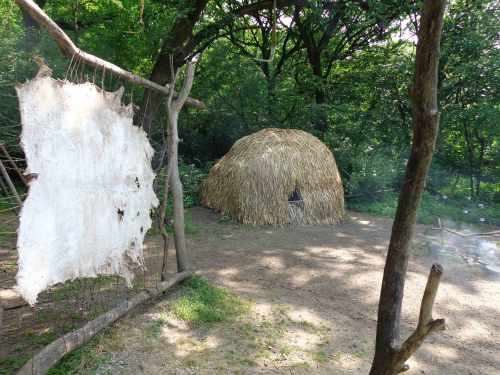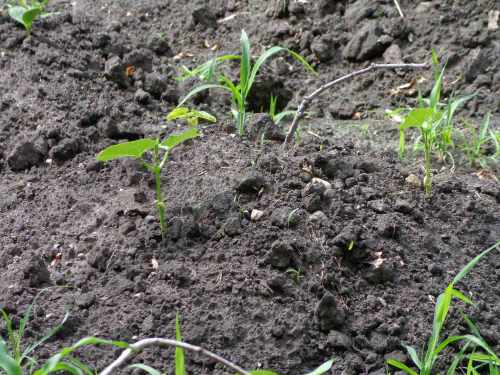In addition to the food-drying stages, gardens, and, cooking areas, Ioway villages also had work areas, hide-scraping racks, pottery pits, and gardens, as well as housing for families. In this photo, you can see a traditional Ioway winter house in the background, with a hide-scraping rack on the left.
Housing for the Ioway varied by season and purpose. A buffalo hide chibóthraje, or teepee, was easy to take along during hunting expeditions. In the summer, a bark hut called náhachi was comfortably cool.
The winter house, called a chákirutha, was covered with four layers of cattail leaves, so it was really well insulated. The interior temperature would be about 50 degrees all winter long, so the Ioway winter home would actually be warmer than the early homes of most pioneers. Here are two interior views of the winter house—which seems quite comfortable. In the top photo, you can see baskets, a drum, and the stone fire pit that would be used to heat the hut during the winter.
The metal utensils shown below would have been added to Ioway tools when trading with the French began.












